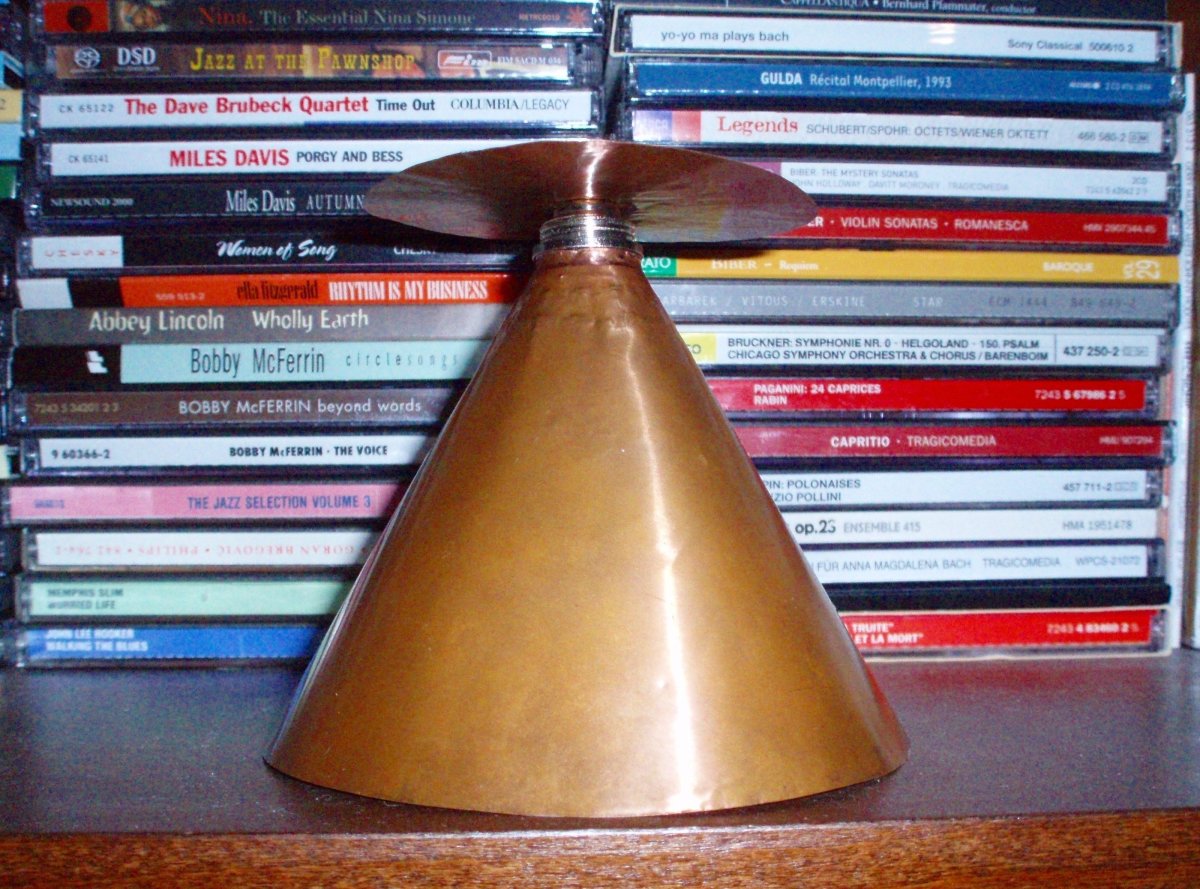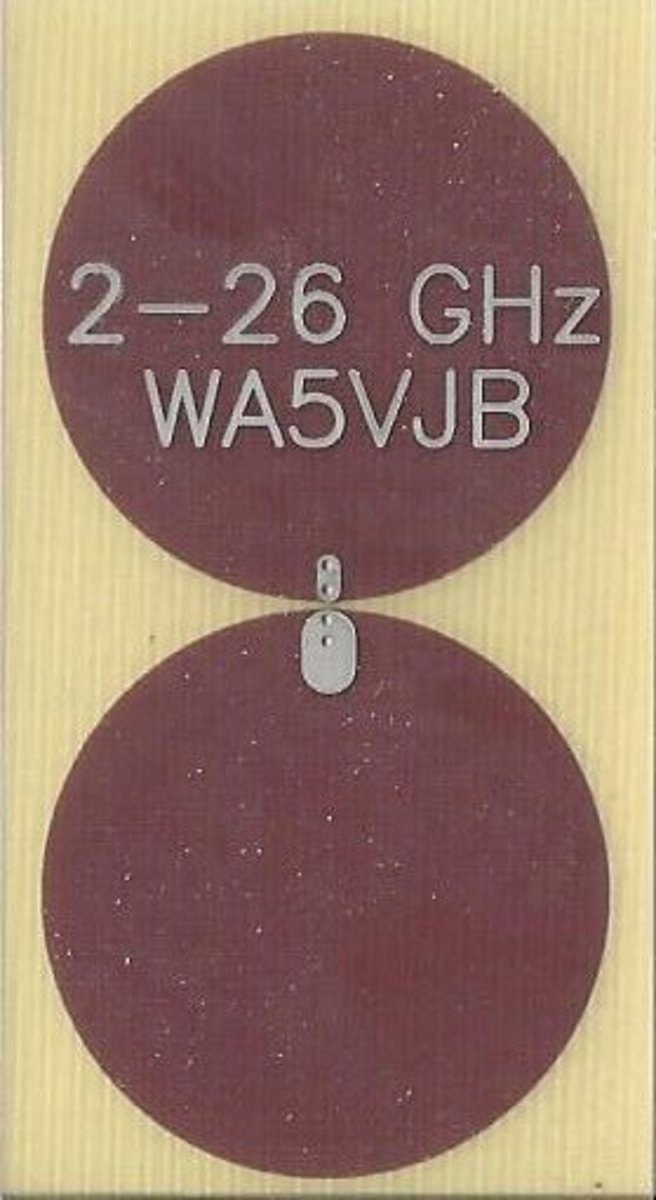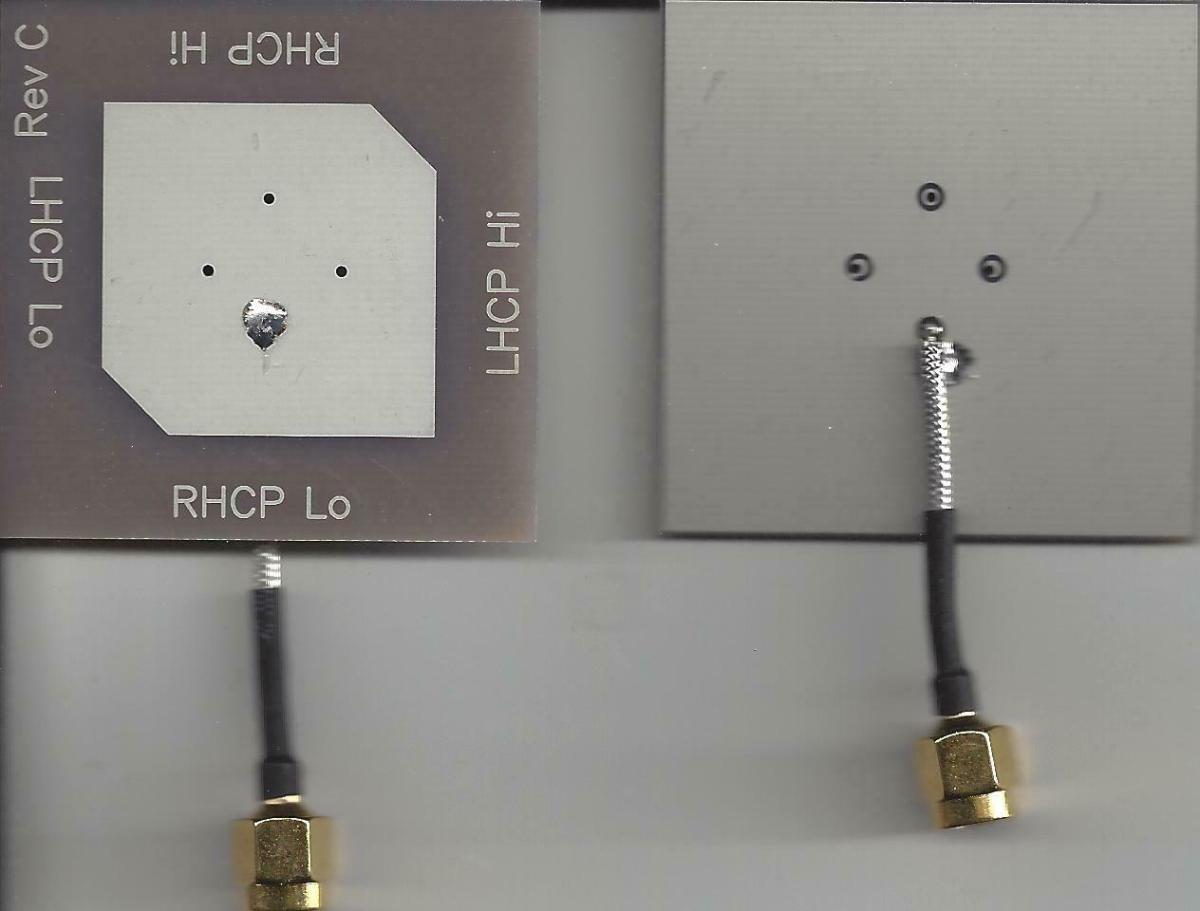“True” discone antennas have a sold metal disk on top of a solid metal cone. In this case, it can cover two octaves of bandwidth. Many hobbyists use antennas called discones that lack this solid metal body. Instead, they connect several metal rods to create a somewhat open cone and disk. These discone antennas can receive 140 to 500 MHz. If someone adds a vertical whip to receive the Six Meter band, 50-54 MHz, then the system becomes lossy. In practical terms, adding that vertical whip antenna reduces its performance at high frequencies. These antennas are only practical if you’re working with local repeaters with strong signals. The use of rods instead of a solid metal cone reduces wind loading. It also simplifies construction, which is why there are so many discone antennas built by amateur radio operators. You can make the spokes or ribs of the discone antenna with any stiff wire. For example, you could use stiff wire or brazing rods. You can use anywhere from 6 to 16 rods.
A Brief History of the Discone Antenna
The first discone antenna was developed by Armig Kandoian. He received a patent for it in 1945. His patent specifically called for it to be used in aircraft communication and direction finding. They were almost immediately adopted by the military. That is one reason why discone antennas are also known as discone aerial antennas. Adamantios, CC BY-SA 3.0 , via Wikimedia Commons
The Main Uses of Discone Antennas
Discone antennas can be used for radio scanning and monitoring. Note that discone antennas are rarely used for RF transmissions. Discone antennas are ideal for VHF and UHF applications where the signal is close to ground level, because discone antennas have a low angle of radiation and reception. The angle of radiation increases slightly at the top of the antenna’s frequency range. Indoor UHF antennas like Wi-Fi antennas are often discone antennas. And they may be made out of solid sheet metal.
The Advantages of Using Discone Antennas
Discone antennas are omnidirectional antennas. They’re also wideband antennas like many planar antennas. They have a frequency range ratio of at least to 10:1. You can buy discone antennas with a 30 to 1300 MHz frequency range. This makes the discone antenna one of the few wideband omnidirectional antennas available.
Discone antennas are vertically polarized, but the vertical radiation pattern very narrow. This makes discone antennas most sensitive to signals coming from the horizon rather than a nearby RF source.
The gain of discone antennas is similar to that of a dipole antenna. Yet they can have a gain of less than zero.
The Disadvantages of Discone Antennas
A discone antenna allows you to receive a wide frequency range from all directions. The downside is that you’re going to suffer interference from all directions and almost any frequency. The discone antenna is generally large and they can be massive if you’re trying to receive lower frequencies. This is why they’re generally used for frequencies over 30 MHz. Planar antennas covering the same frequency range are smaller, though they tend to need to be mounted outside, whereas a metal discone antenna can be mounted outside.
The Basic Rules of Discone Antenna Design
A discone antenna has three main components: a disk, a cone, and an insulator. According to Wikipedia, the disk should have a diameter of 0.7 times the quarter wavelength of the lowest frequency received by the antenna. The cone’s length should be one quarter of the wavelength of the lowest operating frequency of the antenna. The diameter of the top of the cone determines the upper frequency limit of the antenna. The smaller the dimeter, the higher the frequency. The distance between the top of the cone and the disk should be one quarter of the inner diameter of the cone. Tamara Wilhite The angle of the cone or the rods creating the de facto cone can be 25 to 40 degrees. The cone and the disk must be separated by an insulator. The distance of the cone to the insulator will affect its performance on the high end of the antenna’s frequency range. At low frequencies, a discone antenna’s performance is similar to a ground plane antenna like a patch antenna. This content is accurate and true to the best of the author’s knowledge and is not meant to substitute for formal and individualized advice from a qualified professional. Tamara Wilhite © 2020 Tamara Wilhite


